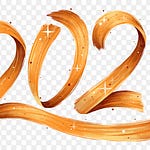
Todays songs are three renditions of January, February, more commonly known as Last Month of the Year. Actually, this a sneak preview for a treat that will come in a few days on Dec 8.
[Note: if you are new to these songs-of-the-day, todays posting of having the songs-of-the-day being a study collection with three versions of the same song is very unusual. I MIGHT do it again once this year, but not more than once.]
Playlist - The three versions are by:
Mike, Peggy and Penny Seeger, recorded in 1953
Elizabeth Mitchell and friends, recorded in 2013
The Tarbox Ramblers, recorded in 2004
The story behind the song
This call-and-response song is is one of the most popular Christmas songs in traditional music circles (i.e., among fans of authentic old folk songs.) It has been recorded on many folkie Christmas albums and I suspect is pretty well-known to the general population, but I don’t think of it as being among the holiday’s core of songs that everybody knows.
It has the very best credentials possible for being considered to be an authentic folk song even though we (probably) know who wrote it. It was collected in 1937 by the acclaimed song-catchers John and Ruby Lomax, accompanied by their son Alan. They were working as part of a WPA cultural preservation project for the Library of Congress’ American Folk Music Archive. They got the song from Vera Ward Hall (1902-1964), a Black cook and washerwoman who lived in Paynesville, near Livingston in rural Alabama. Vera’s mother was a former slave. She and her cousin Dock Reed had a vast repertoire of old songs.

The Lomax’s remained lifelong friends of Vera and Dock. In 1959, Alan published a book called The Rainbow Sign (Duell Sloan and Pearce) that was about the lives of two rural Black individuals, one a preacher and the other a singer of traditional songs. The book was based on extensive taped interviews with two real individuals. Lomax used pseudonyms to protect their privacy but much later in an interview he admitted that the singer “Nora” was Vera Hall and the preacher was Dock Reed.
That same year, Alan Lomax returned to Paynesville and collected further material from them. One was Vera’s Sunday School lessons which included this song. In proper folk tradition she had changed the words in the verse lines to suit the occasion. I said this is a sneak preview – that is because in four days I will be posting Lomax’s field recording of that Christmas lesson for you.
After January, February was first collected in 1937 it languished for a while, forgotten in the archive. In the late 1940’s, Ruth Crawford Seeger, a piano teacher and wife of the renowned ethnomusicologist Charles Seeger, began compiling a Christmas music songbook. It was intended to encourage and assist other music teachers to develop children’s Christmas pageants and shows that used authentic folk songs rather than the standard Christmas repertoire.
Ruth may have discovered this song in the archive herself. But it is at least as likely that either John, Ruby or Alan Lomax, or her husband Charles, told her about it be. The original recording’s chorus and call-and-response format of the song were perfect for her project, but the recording did not have the Christmas-oriented call lines with which we are now so familiar.
Ruth Crawford Seeger’s songbook, with its beautiful illustrations by Barbara Cooney, is American Folk Songs for Christmas. It was published by Doubleday & Co. of New York in 1953. But unfortunately, Ruth died that same year when the project was not quite complete. Three of her children, Peggy, Penny and Mike Seeger, along with other friends and Ruth’s students, rushed to record the intended companion record set. That is available from Smithsonian Folkways, and it is from that source that the first version of this song comes.
Seeger’s songbook does give any call lines for this song other than the first question: “What month was my Jesus born in?” I have not confirmed it but I am pretty sure that the additional call lines that Mike sings are from John Lomax’s original 1937 field recording. Christmas call lines were sung by Vera in 1950 when Harold Courlander re-collected the song from her. That version was included in a Folkways box set of records called Negro Folk Music of Alabama that was released the same year but I don’t know if Seeger knew about that new recording. Certainly, Mike didn’t when they posthumously recorded the companion album for the book.
The 1953 publication of Ruth Crawford Seeger’s book coincided with a rise in the popularity of folk music, but that was nipped in the bud by an emerging movement to ferret out communists and socialists from society led by Senator Joe McCarthy’s “communist witch hunt.” But in the latter 1950s folk music returned to even greater popularity and it became a prominent part of pop music through the 1960s. Thus, just at a time when radio play and record sales were taking a very important role in shaping popular culture Ruth’s songbook became a very important source of material for Christmas season performances and recordings by folk singers and groups.
These three versions

The first version of January, February in this set is from the companion album for the book that was recorded by Peggy, Penny and Mike Seeger and friends in 1953. As mentioned above, Mike’s call lines are probably from the originally-collected 1937 non-Christmas version of the song. In her book Ruth only had the chorus and it does not even suggest that other calls could be written for it. That might have been part of the still-unfinished work when Ruth died. Had she been able to continue Harold Courlander’s newly recorded version with Christmas call lines would probably have been brought to her attention. In fact, they might have been in her notes but not yet incorporated into the draft text of the book when she died.
Mike presumably had access to the original source material for the song and recognized that only one call and response does not sound like a complete song. But instead of writing his own Nativity-oriented calls, and not knowing about the new Vera Hall field recording, he used the original ones for this companion album. He and his sisters knew that music teachers hearing it this way would see that they could write, or encourage their students to write, their own Christmas calls for the song (just as, it turns out, Vera Hall had already done for her Sunday School students.
It is also interesting to note that the family does not try to sing the song in the style of a negro spiritual. In general, Ruth’s book does not spell the lyrics of the songs in her book in ways that try to replicate the dialect of the songs’ American sub-cultural origins. To my ears their singing sounds more like a white Appalachian accent which is what Mike often used for folk songs from that region.
The second version was recorded in 2013 when Elizabeth Mitchell and friends re-imagined how the song could be sung. By that time, Vera’s 1959 version had been circulated within the folk music community and several folksingers had recorded it in various singing styles. They released a fabulous CD on the Smithsonian Folkways label called The Sounding Joy that (mostly) are interpretations of songs from the book. The second version of the song is from that album and it uses the call lines from Alan Lomax’s 1959 re-recording of Vera Ward Hall’s singing.

The third version is performed by the now-disbanded Boston based roots and Americana band the Tarbox Ramblers, founded by Michael Tarbox. It comes from their 2004 album A Fix Back East. My daughter Gillian heard them perform this song at the Salmon Arm Roots and Blues Festival that year and knew that this song was right up my alley. She told them about my Christmas music samplers (they were on CDs back then) and traded the group a bottle of her home-made cherry wine for the CD. Although the group disbanded shortly after that time they have held Christmas reunion concerts in in Boston in 2021, 2022 and one is again scheduled for this year.
Note that, as with Mike Seeger’s 1953 version, Michael Tarbox sings the original 1937 non-Christmas call lines and not Vera Hall’s now nearly-universal calls that were recorded in 1959. Tarbox must have been familiar with the Christmas version but purposely chose to do the earlier version. Possibly that choice was based upon research in Lomax archives to see what Vera Hall told him in 1937.
Lomax would undoubtedly have asked her for information about the source of the song. Did she tell him who she had learned it from, or that it was her own composition? I’m guessing that it was the latter option, but if she did not write it herself that raises some interesting questions. The song seems to be thematically quite different from any other call and response song that has been collected from folklore. The answer is in the Lomax archive held by the Library of Congress. Tarbox’s deliberate use of the old version suggests that maybe he did find that it was recorded by Lomax as folklore rather than as a relatively recent, and as it turns out, an in-process composition by a rural Alabama Black laundress.
Personally, whatever it is, I really enjoy this percussion-forward interpretation of the song. But before you go picking a favourite wait until Dec 8 when you have had a chance to hear Vera Ward Hall’s own 1959 rendition of her song in the context of her Sunday School lesson.













Share this post